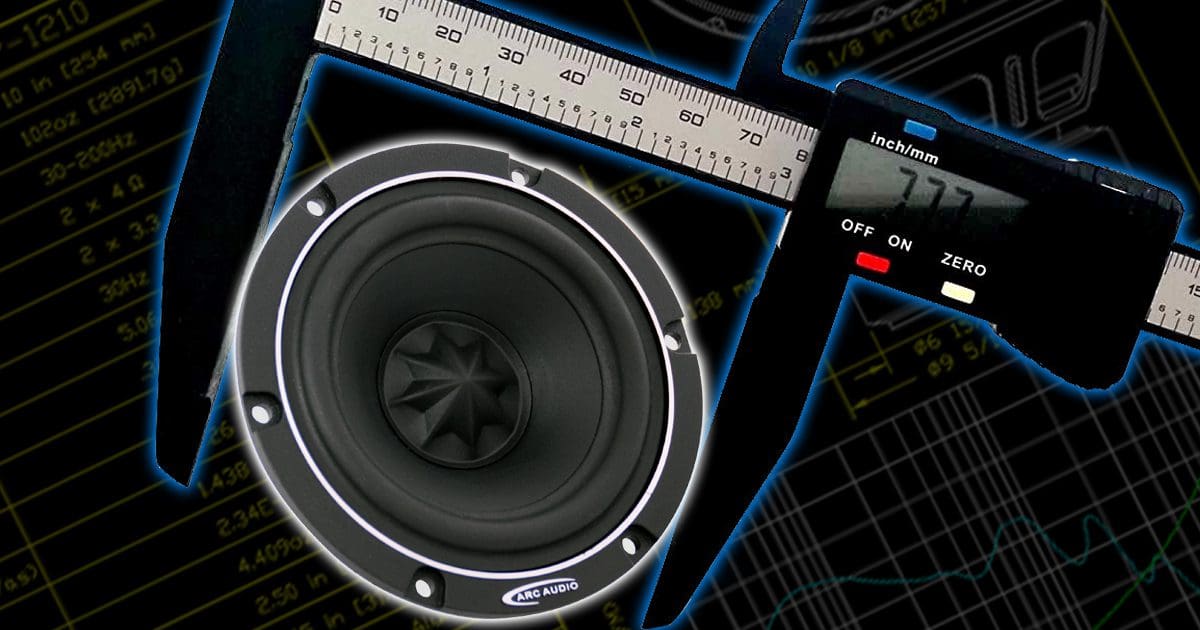I should stop looking at posts in car audio groups on social media. I’m not opposed to answering a few questions to help enthusiasts, but the constant barrage of untrue statements and misunderstandings about what matters in choosing a product like speakers is overwhelming. Let’s look at some typical speaker specifications made by companies that don’t understand speaker engineering and break them down scientifically.
Analyzing Useless Speaker Specifications
As we’ve said many times, shopping for new speakers for your car requires an in-person visit to a local mobile enhancement retailer to audition the options they have available. This is the only way to choose between poor performance drivers and those that are well-engineered. The listening process and, more importantly, the comparison process will provide you with information about frequency response, relative efficiency and distortion characteristics when executed properly. Assuming that the speakers you audition are the right size for your application, making an educated purchase decision should be easy.
Can we learn anything from speaker specifications published on websites? Maybe a little, but often this data conveys nothing about a speaker’s quality. Let’s look at an example.
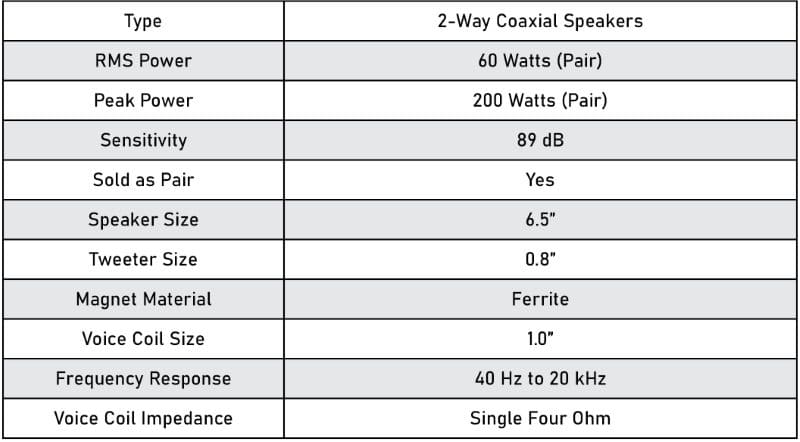
Speaker Type Description
The first piece of information provided is the speaker type. In this example, the speakers are described as two-way coaxial drivers. This is valuable information because it tells us that this is a pair of speakers – as the word speaker in the plural. We also know that there are midrange drivers and tweeters by the two-way description. Finally, the word coaxial tells us that the tweeter is mounted in the woofer’s center as a single assembly. We’re off to a good start!
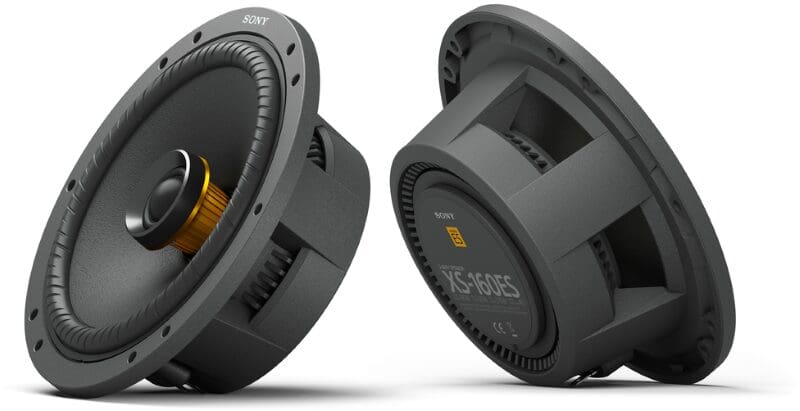
Speaker Power Handling
This example is perhaps the strangest description of speaker power handling I’ve seen in my 34 years in the car audio industry. The specifications state that the RMS power handling is 60 watts for the pair of speakers. Nobody serious about audio would ever rate power handling for a pair of drivers. Amplifiers aren’t rated that way, so why would a speaker be? I don’t want to know how many calories are in two donuts if I’m only going to eat one!
Nevertheless, what we can learn from this is that each of these speakers can handle 30 watts of power, which isn’t very much. A standard car radio, rated to make 15 to 18 watts of power (without distortion), is likely powerful enough to exceed the ratings of these speakers if pushed hard into clipping.
The manufacturer claims this as the RMS power rating. Using the term RMS is incorrect. This is a continuous power handling specification. All audio power is measured using RMS watts, which tells us how much heat will be created.
The next specification is peak power. For this pair of speakers (sigh), the rating is 200 watts. I don’t understand the need for a peak power rating when no crossover information is provided with the value. If I connected these speakers to a subwoofer amplifier and fed them 100 watts of power at 40 hertz for one second, they’d be destroyed, if not severely damaged. An accurate peak power rating tells us how much power a speaker can handle when playing dynamic music. That’d be rock music or perhaps country, not something with massive amounts of low-frequency energy. The only reason these numbers exist is for marketing purposes.
Speaker Sensitivity Specifications
These speakers have a sensitivity rating of 89 dB. To be as accurate as possible, the units should be dB SPL, as that’s what’s used to describe a volume level. Without some qualifying information, this value of 89 dB is useless. Is this with 1 watt of power or 2.83 volts? What distance is the speaker away from the microphone? A proper efficiency specification would state something like 87 dB SPL at 1W/1M or 2.83V/1M. To achieve this 87 dB SPL output, we know how much power is being delivered to the speaker from the 1-watt or 2.83-volt information, and we know how far the microphone is from the driver. If any of these values change, the usefulness of the specification changes. As such, the 89 dB spec provided with these drivers is useless. Just imagine if that sensitivity specification were for a pair of them.
Speaker Size Information
For these speakers, the specifications denote that they are a 6.5-inch driver. For most applications, this is probably adequate information. Details about mounting depth, cut-out diameter and overall diameter should be provided. In this case, they are available on another page. What should also be included, especially in the case of coaxial speakers, is how far the tweeter sticks out from the mounting surface. This information wasn’t provided. As such, you wouldn’t know if these will fit behind a factory grille in your vehicle.
The second piece of sizing information provided with these speakers is that they include a tweeter that’s 0.8 inch in diameter. If you have studied our articles on speaker directivity and are familiar with the typical low-frequency performance characteristics of tweeter diameters, you know that there will be some issues with this driver. The tweeter is unlikely to be able to play low enough the prevent the output of midrange from becoming directional. This likely isn’t a problem if you’re listening to speakers directly on-axis. If the speakers are mounted in the doors of a car or truck, then the upper midrange frequencies will likely be attenuated at the listening position before the tweeter takes over.
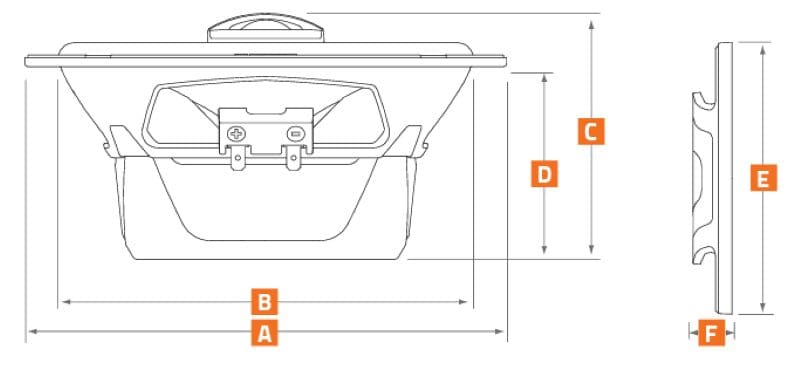
Magnet Material Options
The spec sheet mentions that these drivers use ferrite magnets. All we can glean from that is that they don’t use neodymium. We don’t know whether the magnets are a low-grade Y20 ferrite or the manufacturer chose a moderate grade like Y32 used in better designs. We need to know the grade or composition of the magnet to know if it’s of good quality and may offer performance benefits.
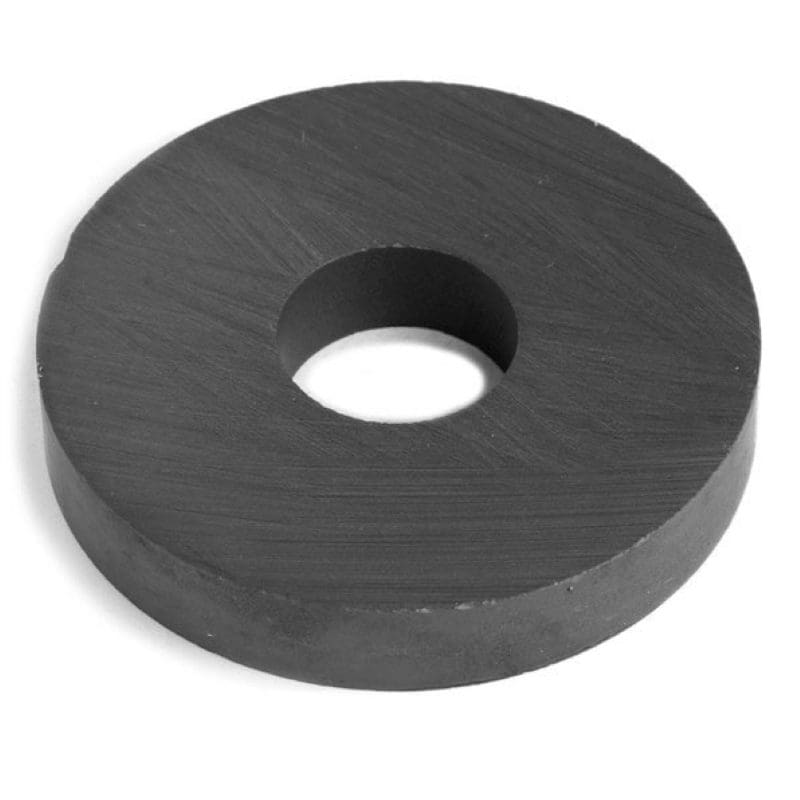
Voice Coil Size Details
The specification information notes that these drivers have a 1-inch voice coil. All this tells us is that the low power-handling ratings are likely accurate. A voice coil that small doesn’t have much surface area to radiate heat. If you pour the power into these with a small amplifier, they will likely fail quickly.
More appropriate information might include the height of the voice coil to give us a hint about the excursion capabilities of the driver. Better yet, if an Xmax specification were included, we’d have a way of comparing these to other offerings in terms of how much air they can move.
The Most Useless Car Audio Specification of All: Frequency Range
OK, I had to take a deep breath before diving into this one. The second-to-last specification is frequency response. More accurately, they have provided the frequency response limits. The company lists the driver as capable of playing from 40 to 20,000 hertz. The first problem is that no tolerance is included. Is this within a window of 3 dB SPL? Likely not. A 6.5-inch driver isn’t going to produce output down that low. Maybe it’s 10 dB. If so, that’s too much variation to be helpful information. We don’t know whether there are any peaks or dips in the midrange or the transition to the tweeter is smooth.
As per the ANSI/CTA-2031 Testing and Measurement Methods for Mobile Loudspeaker Systems standard, the upper and lower frequency limits are specified as the values where the output is 10 dB below the highest frequency point. These frequency values describe what’s known as the operable bandwidth of the driver. This does nothing to describe the speaker’s performance through the midrange – where it matters most.
The ideal information would be to include a frequency response graph. This information can tell you whether poor design choices or component resonances cause peaks or dips.
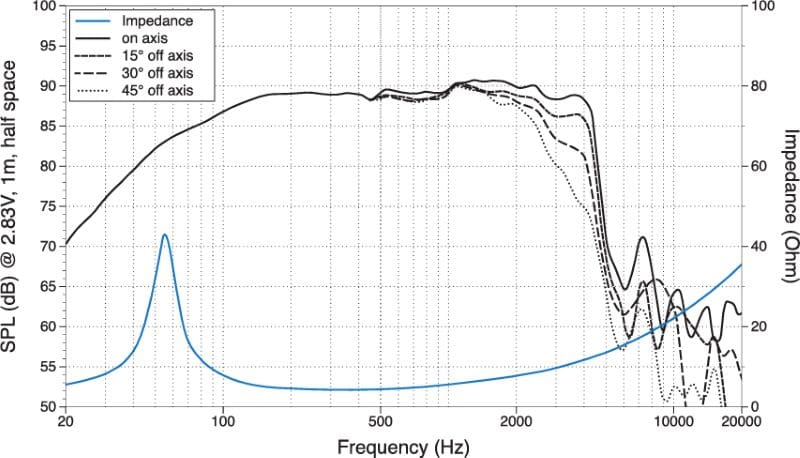
We’ll review the information in this graph another time, as this is worthy of a lengthy discussion.
Speaker Impedance
Wrapping this up, the spec sheet tells us that these speakers have a nominal impedance of 4 ohms. We’ll call this good enough, as it tells us they weren’t designed as 2- or 8-ohm drivers. To be fully transparent, information such as the blue trace in the graph above would tell us more about the driver design characteristics.
What Information Is Missing?
If you’re serious about picking speakers for a high-end audio system, you’d likely want a complete set of Thiele/Small electromechanical specifications for the drivers. First and foremost, you’ll know the driver’s total Q (Qts), so you have some insight into whether or not it has a bump in the midbass region. The inductance specification (Le) can tell you if a shorting ring or copper cap in the design might reduce inductance (though, in a coaxial system, that’s not possible). A qualified technician can use the resonant frequency (Fs), equivalent compliance (Vas) and Qts to simulate the proper size enclosure for the drivers. This is more important for subwoofers and or any speaker that will be going into a sealed pod.
